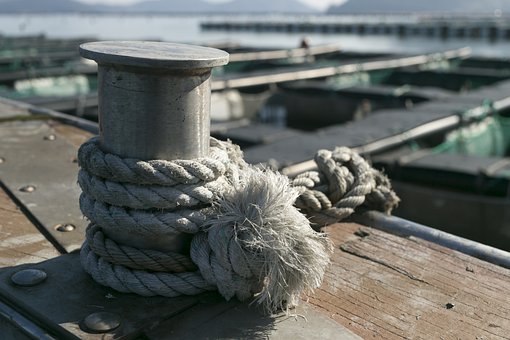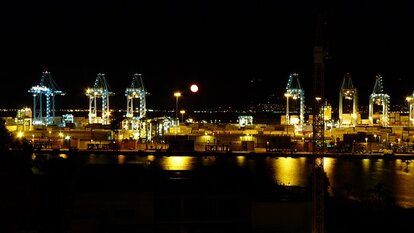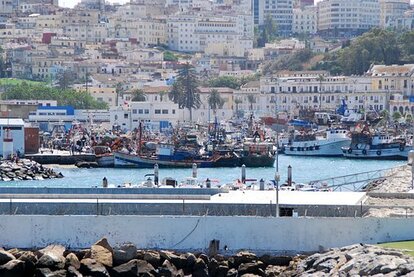Mediterranean Dialogue
The submarine tunnel between Europe and Africa is closer

It is a dream that dates back to 1869, when the Spanish Public Works Council considered the possibility of connecting Europe and Africa through a tunnel under the Strait of Gibraltar. It was a time when the railway was beginning to consolidate its take-off as a major means of transport for people and goods and the construction of the new and necessary iron roads cut through mountains to facilitate the passage of convoys. The political upheavals of the time and the first studies on the project seemed to demonstrate the impossibility of undertaking a gigantic project, both because of the enormous sums of money that would be required and, above all, because of the unapproachable challenge of the sea, which at that point is very deep, has a devilish wind regime and is a friction point between the Eurasian tectonic plate and the fault line that extends between the Azores and Gibraltar.
Although great engineers periodically kept the dream alive, it would take more than a century for the project to be revitalised, specifically in the Spanish-Moroccan Joint Declaration of Fez of 16 June 1979, in which King Hassan II of Morocco and King Juan Carlos I of Spain agreed to work together to develop "a permanent link in the Strait of Gibraltar", linking the two shores of Europe and Africa.
To implement this Declaration, the two countries have created two companies, each responsible for carrying out studies of all kinds on the feasibility of the project. On the European side, the body is the Sociedad Española de Estudios para la Comunicación Fija a través del Estrecho de Gibraltar (Segecsa), now chaired by José Luis Goberna after several years of the post being vacant. On the African side, Morocco created the Societé Nationale d'Etudes du Detroit de Gibraltar (Sned). In the four decades since then, both bodies have produced voluminous studies of all kinds, especially geological, meteorological, economic, engineering and even ecological impact studies. Despite the successive ups and downs in Spanish-Moroccan relations over this time, the Joint Committee of the two institutions, composed of ten members - five Spanish and five Moroccan - have not failed to meet at least once every six months to share the progress of their respective research, which is jointly owned by the two countries.
But the real revival of this dream has come with the announcement of the 2022 General State Budget, in which the government of Pedro Sánchez has included an allocation of 750,000 euros for the Secegsa project, for the conclusion of the studies underway. The Ministry of Transport, to which Secegsa is attached, would have obtained the approval of the European Commission for these final studies to be charged to the Recovery Plan. At the same time, the Societé Nationale d'Ètudes du Detroit de Gibraltar (Sned), attached to the Moroccan Ministry of Equipment and Water, had a new director general, Abdelkabir Zahoud, appointed on 3 November, in a gesture that indicates Rabat's interest in reviving the project.

Algeciras
© Pixabay2030 on the horizon
Despite its enormous technical difficulties, the main stumbling block to the project's completion has always been of a political nature. The major differences between Europe and Africa have often materialised in the tensions between Spain and Morocco in the bottleneck that is the Strait of Gibraltar. In fact, the undertaking of a project that is undoubtedly one of the most gigantic in the world would not have too many problems in finding funding, given the potential that many economic experts attribute to this infrastructure. The president of the Institut Marocain des Relations Internationales, Jawad Kerdoudi, stated in a recent article that "despite the high cost of the project, the World Bank, the European Investment Bank, several Arab funds and the African Development Fund have already shown their willingness to finance it in the past".
The turnaround in Spanish-Moroccan relations following the change in the political-diplomatic line - verified in recent months - has allowed the project to be relaunched. As was made clear at the recent Euro-Mediterranean Meeting, sponsored by the Junta de Andalucía and the magazine Atalayar, and held at the Three Cultures Foundation (formerly the Moroccan Pavilion at the Seville Expo), the cooperation and complementarity of the two countries will multiply their joint strategic value and their decisive role as leading actors in Africa and Europe.
If the decisive political impetus gives the final green light to the implementation of a project that has already been blessed in advance by Brussels, the beginning of work could be around 2030 and the inauguration, even of its first operational phases, barely ten years later.

The Eurotunnel model
In the absence of this definitive political impetus, the two societies are taking steps to ensure that the decision will be taken soon. For example, they have contacted the German company Herrenknecht, the largest manufacturer of tunnel boring machines in the world, which has already expressed the feasibility of building the gigantic machines that would drill the subsoil of the Strait of Gibraltar.
After definitively ruling out the construction of a bridge - the first idea in this respect was expressed by Alfonso Peña Boeuf in 1956, who conceived the idea of a huge suspension bridge - the feasibility studies are converging towards the Eurotunnel model, although with the characteristics inherent to the Strait of Gibraltar.
The idea would be to build three tunnels: two single-track tunnels with an inner diameter of 7.9 metres and a service gallery with an inner diameter of 6 metres, connected by transversal passages at intervals of 340 metres, which would be reduced to 100 metres in the safety zone.
After examining and ruling out other possibilities, the studies conclude that the terminal stations should be located at Punta Paloma in Tarifa, and Punta Malabata in the Bay of Tangiers. Between the two, the infrastructure is 42 kilometres long. Of these, the length of the tunnel would be 38.7 km, of which 11 km would be exclusively underground and 27.8 km underwater. The maximum depth under which passenger and freight trains will run will be 300 metres and a maximum gradient of 3%.
As several of the speakers at the above-mentioned meeting in Seville revealed, the heads of the major ports affected by this work, Algeciras, Tangier and Tangier Med, do not believe that the tunnel will diminish the potential volume of their business, but rather that it will be a revulsive factor in their respective areas.
And, of course, what no analyst doubts is that the potential of such an infrastructure will multiply trade between Africa and Europe and bring two continents, so close and yet so separated by their differences and historical clashes, closer than ever before.
